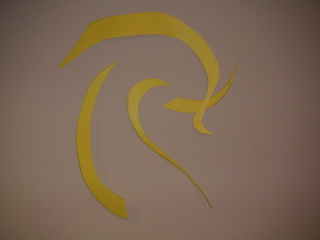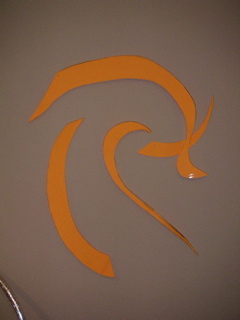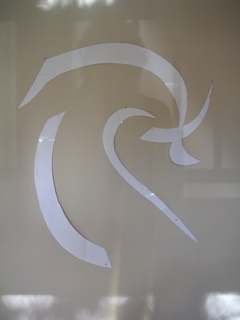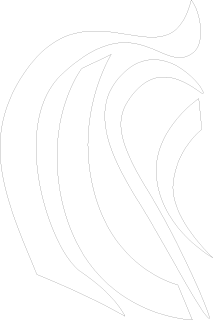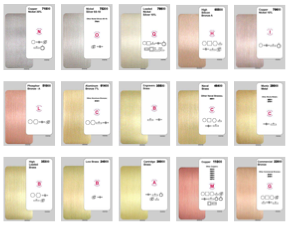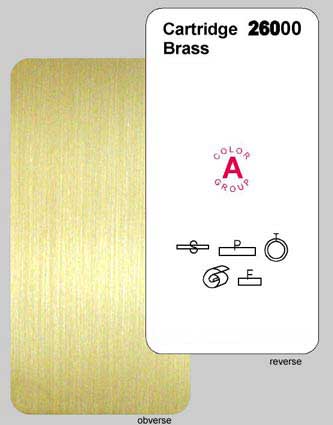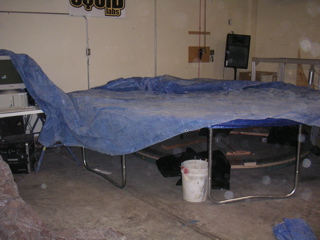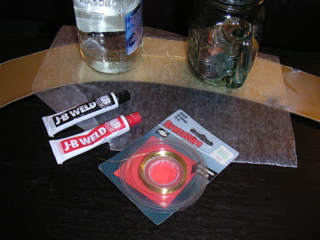Step 7. The next trick is mounting the
pieces to the wall. I wanted some depth and shadow in the piece, so the
three larger pieces are actually mounted between one and two inches out
from the wall. The downside is that it makes it more likely for people or
clothing to catch on the sharp points, which could be dangerous if the
piece was rigidly mounted. The solution is for each of the bigger pieces to
hang on a single screw sticking out from the wall, like a cheap wire
picture hanger. That way if anyone catches on a point the piece it will
move with them instead of poking or tearing clothing. This trick only works
if some part of the piece is above the center of gravity when hanging in
its final position: if the piece is "U" shaped (like the small
spur) then no matter where you put the hanger it will flip over.
First I found the balance point on each piece that would cause it to
hang at the desired angle. Then I used two brass washers and some thin
brass wire to make a wire hanger for each piece. I looped the wire back and
forth alternately through the center of each washer, leaving a couple
inches between them. Then I twisted the loops to form a single stranded
wire. Finally, I glued the washers to the back of each of the three pieces
such that the center of the wire was at the center of gravity I'd located
earlier. JB Weld works well as a
metal-to-metal adhesive, and is available at most hardware stores.
Then I installed EZ
Anchors (available at most hardware stores) into the drywall at the
appropriate position, and inserted long #8 brass screws into the anchors
such that they poked out at the depth I wanted. Then I just hung each piece
like I'd hang a painting, and could adjust a little along their wire
hangers to make sure they were all positioned at the right angle.
As I mentioned above, the smallest piece didn't have an appropriate
place to attach a hanger, but luckily it was both light and intended to be
flush with the wall anyway. After briefly experimenting with gluing nails
directly to the back of the piece (didn't stick — the heads of the
nails didn't have enough surface area) I just stuck two normal sewing pins
into the wall so and set the piece on top of them (barely visible in the
rightmost picture, above). Then I cut the head of the pin and bent it
slightly to make the piece more secure. | 


